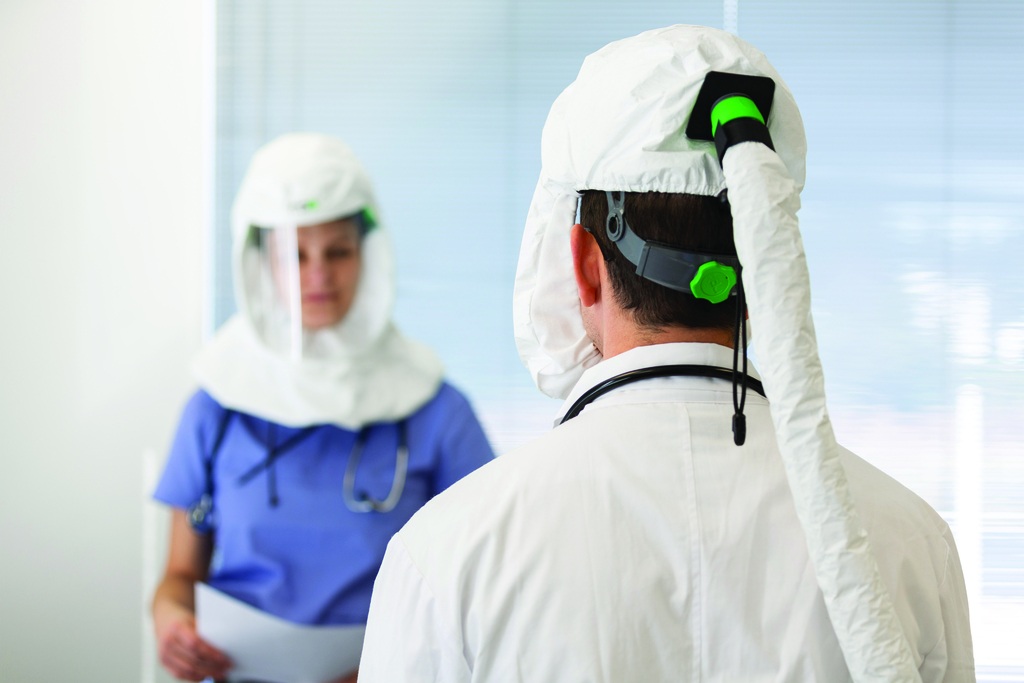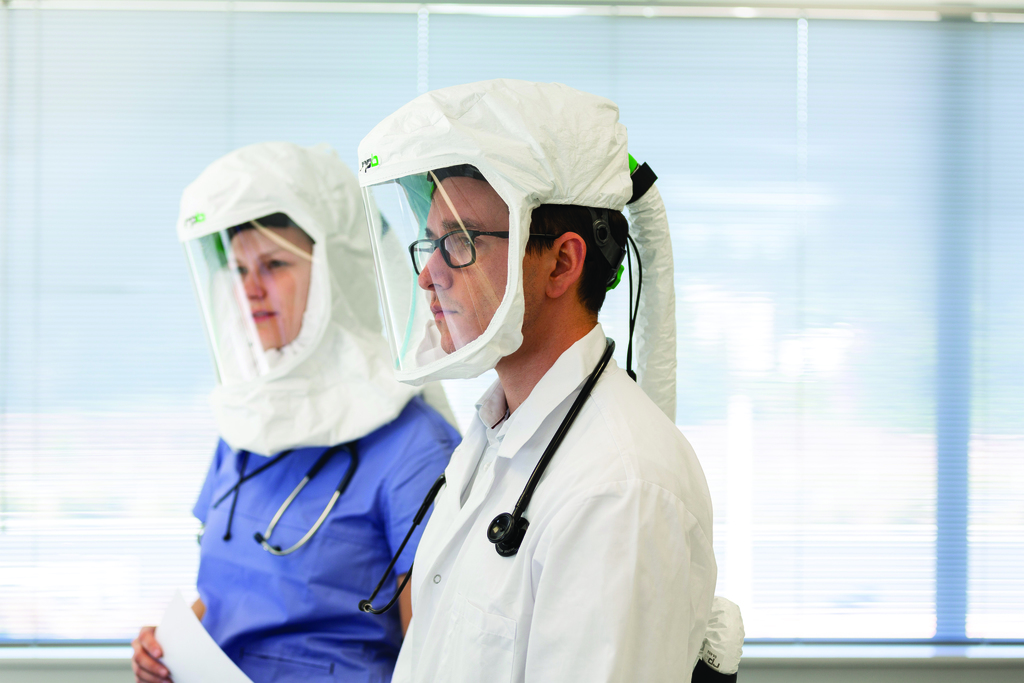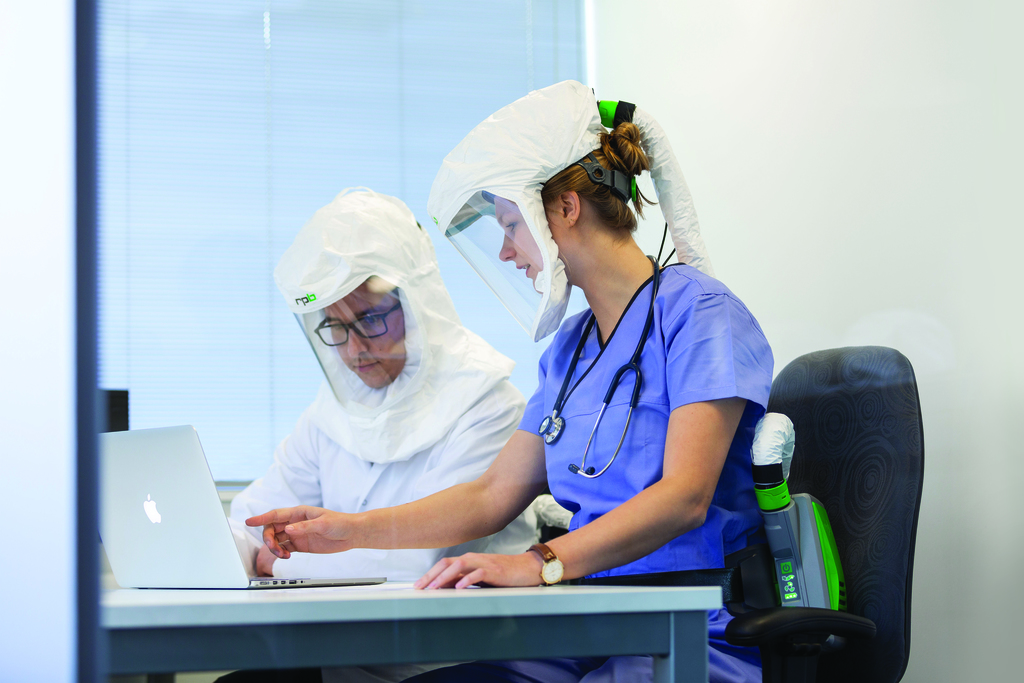
Kelly Rose
Editor

Kelly Rose
Editor
Given that a large part of communication is non-verbal, Jack Hartley asks if it is time to rethink your respiratory protection, especially in the healthcare industry where reading facial expressions can be beneficial to patients.
OUR ABILITY to communicate with each other is an essential part of being human. We do this constantly, whether it’s socially, at work or with strangers. In all of these situations, it’s essential that whatever we are saying is understood by the person on the receiving end. When we fail to communicate effectively this can cause confusion, distress, anger, frustration, and sometimes this can even have negative consequences for us too.
Personal protective equipment (PPE) has been in the spotlight this year, and this is something that we now see everywhere, no matter the setting or the country. For the general public, PPE use is typically limited to some form of face covering. But for healthcare professionals where there is an increased risk of transmission, in particular with COVID-19, there is a greater level of protection required. In settings such as hospitals, nursing homes and testing stations the typical PPE that we are seeing is a form of negative pressure respirator, safety glasses and in some cases, face shields too. With the mouth being completely covered, safety glasses covering eyebrows, face shields muffling sound, and working in noisy environments, it is no wonder that people’s ability to communicate effectively is being undermined and a cause of frustration.
Understanding communication
Communication isn’t as simple as we might think. In the act of transferring information between people or to a place, there are two types of communication that we use. Verbal, which is simply our words, and non-verbal which encompasses everything else that we use to convey information, such as tone of voice, rate and volume of speech, articulation, facial expression, eye contact and body language. Both of these are important, but non-verbal makes up a far greater proportion of communication with around 55% body language and 38% tone of voice, leaving just 7% down to verbal communication. This makes our faces crucial areas for communication.
When communicating, we tend to use peoples faces as a primary source of information because although people can consciously try to convey a particular message with their words, it is much harder for their emotions to be hidden and this is something that we pick up on. Around the world, even across different ages and ethnicities, expressions of joy, surprise, sadness, anger, disgust, fear and contempt are considered to be universal. We are able to pick up on these even with language barriers and comprehend information that is being passed on which emphasises just how important the role of non-verbal communication is.
Impact of PPE on communication
For those in the healthcare industry, face masks and safety glasses cover the two key regions of expression, our eyes and mouth. Humans tend to process the face as a whole, rather than individual features for information as they are all interlinked in their movement and expression. If this is disrupted we can have great difficulty in interpreting what is being communicated. The tone of voice, articulation and volume of speech can also be interfered with which can make it very difficult to convey a feeling of calm to a patient when these are covered by PPE and this can make the patients experience of stress and anxiety far worse.
Not only does this effect our perception of expressions, but this also impacts our speech recognition. Through Speech Perception in Noise testing, it has been found that participants wearing surgical masks and a face shield score around 20% on the test compared to nearly 50% without any PPE. This can cause concerns for patient welfare as there is a higher chance of miscommunication and in these settings it can have detrimental effects on patients’ lives. Another factor with hearing is age. A large portion of people that visit healthcare facilities are over the age of 60, which is generally a similar age to when hearing starts to decline. Through a listener comprehension test, output levels from a 2-meter distance while wearing masks have been measured and the mask acted as a low-pass acoustic filter for speech, which in combination with noise present, lack of non-verbal communication and speech degradation made speech close to unintelligible for many people.
New thinking for healthcare PPE
Because of this global pandemic, this has caused considerable strains on PPE supplies worldwide with surgical masks and FFP2s in particular as the general public begin to normalise the use of these. In doing this, people in healthcare settings have been effected, struggling to source supplies to maintain protection against COVID-19. This has seen healthcare personnel wear disposable respirators for hours on end past their usable life, in addition to safety glasses and face shields to increase their protection. Although their best interest is there, they can be doing more harm than good. With a need for reliable sourcing along with greater protection and to combat the issues of communication, people are now turning to loose-fitting powered air purifying respirators as their choice.
These systems offer all-inclusive protection that masks, safety glasses and face shield have, only these do a better job in every way. The face is covered by clear plastic, allowing patients and colleagues to see the users entire face and all the non-verbal communication cues that they use when speaking. Although there is still plastic covering the mouth, this is not in close contact to muffle the voice allowing the verbal communication to be interpreted also. This can be incredibly comforting for someone that is finding the situation stressful, but this also helps to ensure that the information is communicated completely, accurately, unambiguously and is understood.
Loose-fitting respirators also solve one of the biggest problems with the current mask and safety glasses set up. It has been well documented throughout this outbreak the extreme discomfort and pain PPE can cause. With safety glasses digging into the sides of the users face and bridges of their noses as well as masks rubbing on the user’s skin causing irritation and burn like marking, this has shown how that these systems should not be relied on for long term protection. Loose-fitting respirators only mount to the user’s head, dispersing weight evenly across the head and removing any chance of friction between the PPE and users face from occurring. With these being positive pressure, the air is filtered and supplied to them allowing the users to breathe as they normally would.
These advancements in respiratory protection take something that is designed to protect the lungs, to be something much more. For healthcare, the very essence of the job is care. By allowing that process to be as natural and normal as possible through creating PPE that supports that aspect of the role, far better health outcomes for everyone involved can be achieved.
Jack Hartley is content specialist at RPB Safety. For more information, please visit www.rpbsafety.com



2807 Samoset Road Royal Oak
MI 48073
Michigan
United States
UNITED STATES
+1-8668475384